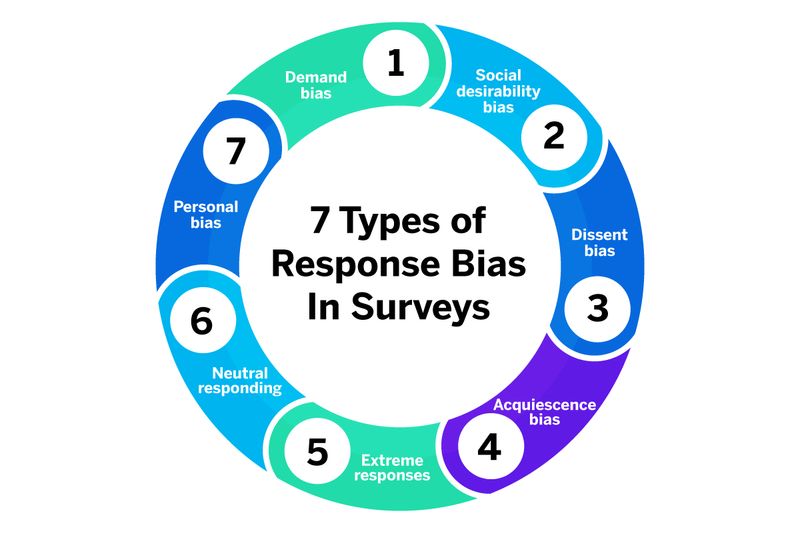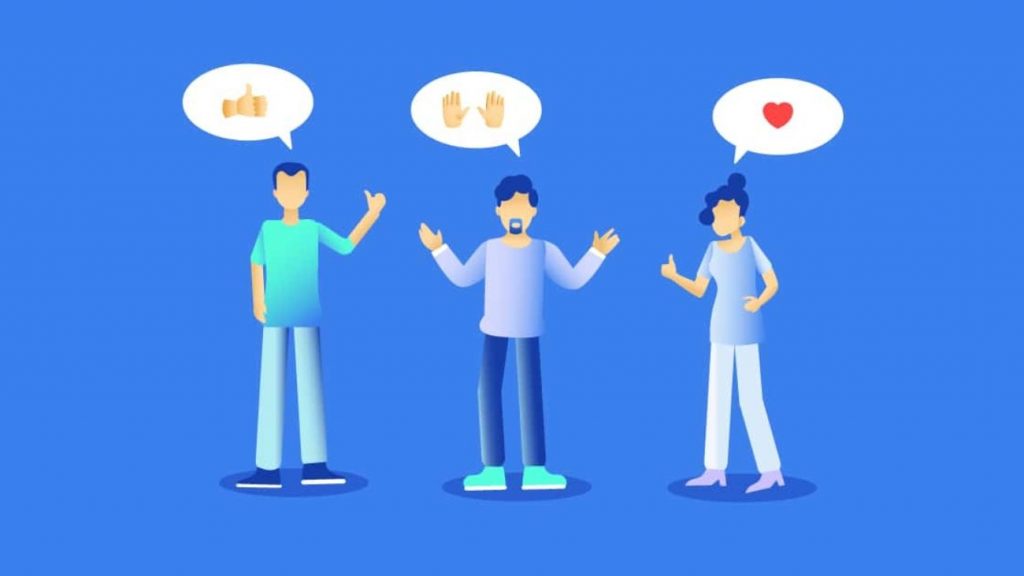Your survey data’s success and results could be hampered by response bias. We’ll learn where to look for it and how to stop this bias before it’s too late in this comprehensive guide.
Honest and objective responses are necessary for a survey to produce data that can be used. Simple bias, deceit, and dishonesty in responses result in inaccurate information that hinders wise decision-making.
They might experience pressure to provide socially acceptable responses, for instance. The format of the question or the nature of the preceding questions may have an unintended impact on how a person responds to a survey, and the respondent may not be aware that they aren’t answering the questions in the way the researcher intended.
Study response bias to identify it, spot it, and put a stop to it.
What Is Response Bias?
As was already mentioned, the term “response bias” refers to a broad category of circumstances or elements that affect survey results.
There are a number of reasons why a respondent might give false information, ranging from a desire to fit in with social expectations and respond as they believe they “should” to the nature of the survey and the questions posed.
Response bias typically occurs in surveys that concentrate on individual behavior or opinions, such as their political allegiance or drinking habits. People frequently react in ways they believe to be positive because perception plays such a significant role in our lives.
When given the choice between frequently, occasionally, and infrequently when asked how often they drink, a respondent is more likely to select occasionally or infrequently in order to be perceived favorably.
However, dishonest responses that don’t reflect the opinions of your sample can result in inaccurate data and information that gradually loses value as your study grows in scope.
Since it results in bad decision-making, this can ultimately have devastating effects on organizations that heavily rely on data-driven research initiatives. If a company has a reputation for disseminating highly accurate reports, this may also have an impact on its reputation.
Types Of Response Bias
The term “response bias” refers to skewed or dishonest survey responses, but there are actually several different kinds of response bias. Each one has the potential to inflate or even taint the results of your survey.
Social Desirability Bias
When people are asked sensitive questions, social desirability bias frequently occurs because they give what they think is the more socially acceptable response instead of answering truthfully. Respondents are said to overreport “good behavior” and underreport “bad behavior” in social desirability bias.
These kinds of socially acceptable responses are frequently the outcome of poorly phrased queries, leading queries, or delicate subjects. For instance, alcohol consumption, individual income, intellectual prowess, nationalism, religion, health, charitable indicators, and so forth.
Poorly worded or misleading survey questions press respondents to give a specific response. One of the most obvious examples of a question that will trigger social desirability bias is: “Do you consider daily alcohol consumption to be appropriate?”
Even if the respondent wants to answer honestly, they’ll respond in a more socially acceptable way.
Affirmative action is also affected by social desirability bias. Asking someone, for instance, if they believe everyone should donate a portion of their salary to charity is sure to elicit a favorable response, even if those taking the survey don’t actually do it.

Non-response Bias
Non-response bias, also referred to as late response bias, occurs when respondents to a survey are significantly different from those who don’t.
Analytical or experimental research, like studies that rate people’s health and happiness, is prone to this kind of bias.
Non-response bias is tricky for researchers, precisely because the experiences or outcomes of those who don’t respond could wildly differ from the experiences of those who do respond. As a result, the outcomes might either over or underrepresent a particular viewpoint.
Consider the situation of conducting psychiatric research to assess and identify major depression in a population. However, you end up overreporting one viewpoint from your sample and the behaviors of those who do respond could be very different from those of those who don’t.
In this case, it is impossible to draw an accurate conclusion or comprehend the meaning of the survey data completely.
Demand Bias
Demand bias (also known as demand characteristics or survey bias) occurs when participants alter their actions or opinions purely because they believe they are aware of the research agenda.
Demand characteristics can skew your research findings and come from a variety of sources, which makes them problematic. Think of these as clues about the research hypotheses:
- The title of the study
- Information about the study or rumors
- How researchers interact with participants
- Study procedure (order of tasks)
- Setting
- Tools and equipment (like cameras, and apparel)
When participants recognize these demand characteristics, they all place implicit demands on them to behave a certain way. For example, in one classic experiment published in Psychosomatic Medicine, researchers examined whether demand characteristics and expectations could influence menstrual cycle symptoms reported by study participants.
Some participants heard about the study’s goal, but others were in the dark. Participants who were aware of the study’s purpose were significantly less likely to report negative premenstrual and menstrual symptoms than those who were not.
Indicators from survey research can also be used to assess the dangers of typical demand traits, such as structured interviews when the responder is physically asked survey questions by another person, or when participants take part in group research.
Because of the aforementioned, respondents are more likely to give an answer they believe the researchers want them to give, rather than express their true feelings, or one that is more socially acceptable.
Extreme Response Bias
When respondents answer a question in an extreme way, even if they don’t have an extreme opinion on the matter, this is called an extreme response bias.
When conducting research through satisfaction surveys, this bias is most prevalent. Typically, respondents are asked to rank or rate something (whether it be an experience, the caliber of service, or a product) out of 5 points and select the highest or lowest option, regardless of their true opinion.
Extreme response bias, for instance, makes it much more likely for respondents to give a positive or negative response when asked to rate the level of service they received at a restaurant on a scale of 1 to 5.
Similarly, even if they have no strong opinions about the subject, a respondent may strongly disagree with a given statement.
Extreme responses frequently result from a desire to please the questioner or from the wording of the question, which causes a response bias and forces the respondent to give a more extreme response than they otherwise would.
For example: “Do you think we provide customers with good service if we have a 5* rating for customer satisfaction?”
Neutral Responses Bias
Neutral response bias, as you might have guessed, is the opposite of extreme response bias and happens when a respondent simply gives a neutral response to every question. Due to a lack of interest in the survey and/or time constraints, neutral responses frequently result from survey participants. As a result, they respond to inquiries as quickly as they can.
For instance, it is highly unlikely that the general public will be interested in research on the development of HR technology if it is sent to a sample of them. As a result, they will try to finish the survey as quickly as possible. This is why, before making your research methodology public, it’s crucial to take into account the sample and the structure of your survey.
Acquiescence Bias
Acquiescence bias is similar to an extreme case of social desirability, except that respondents don’t try to act in a “socially acceptable” manner; rather, they just agree with the findings of the research, regardless of their own opinions.
Simply put, acquiescence bias is based on respondents’ beliefs about how they believe the researcher wants them to respond, potentially resulting in demand effects. For instance, respondents may concede and give positive feedback on novel concepts or goods if they believe that’s what a market researcher wants to hear.
Respondents can also deduce cues as to how they should respond based on the way a question is posed or how the interviewer acts.
Dissent Bias
As its name implies, dissent bias is the exact opposite of acquiescence bias in that it causes respondents to express disagreement with the statements they are given rather than their true opinions.

Dissent bias can occasionally be purposeful and indicative of a respondent’s opinions or—more frequently—of their lack of interest and/or need to finish the survey quickly. Your survey design or question-wording should be taken into consideration to prevent dissent bias, which can have a negative impact on your survey results.
Voluntary Response Bias
When your sample is made up of people who have volunteered to participate in the survey, voluntary response biases in surveys happen. Though this isn’t necessarily bad for your survey or data collection, it can lead to a study that overreports one aspect because you’re more likely to have a sample with strong opinions.
For instance, call-in radio programs that invite listeners to participate in polls or discussions about touchy subjects (like abortion, and affirmative action). Similarly, if your sample is composed of people who all feel the same way about a particular issue or topic, you’ll overreport on specific aspects of that issue or topic
Since they tend to favor one side over another, the voluntary bias of this kind can make it particularly difficult to produce accurate results.
Cognitive Bias
Cognitive bias is an unconscious mental flaw that causes people to misinterpret information from their environment, impairing their ability to think clearly and make accurate decisions. In order to support preconceived notions, this can involve attempting to change the facts to fit one’s own viewpoint or viewing information in a different way.
For example, a customer who has had negative experiences with products like yours is most likely to respond negatively to questions about your product, even if they’ve never used it.
Additionally, cognitive biases can appear in a variety of ways, such as the tendency to place more weight on recent events (recency bias) or to escalate an issue irrationally, for example. how we tend to justify increased investment in a decision, especially when it’s something we want. Because they affect how we answer questions, empathy and social desirability are also regarded as cognitive biases.
This response bias in data collection can cause you to either overreport or underreport specific samples, affecting the decisions that are made.
Response Bias Triggering Factors
It’s crucial to take into account potential sources of response bias before releasing your survey. Understanding response bias triggers enable you to avoid common errors when designing your survey.
- Polarizing Language or Subject Matter: Hot-button topics like politics, religion, family planning, and world events all elicit strong emotional reactions. Your survey is likely to have a lot of response bias if it covers any of these or other contentious issues.
- Advance Knowledge: If your subject is aware of the goal of the survey, they might start pre-determining responses. Demand or social desirability bias results as a result, which will be covered later.
- Mistrust: Subjects who lack confidence in the confidentiality of the information they’re disclosing may be prone to providing false information or no information at all.
- Incentives: Participants should be encouraged by the incentives offered, but a balance needs to be struck. If your incentives are too alluring, respondents might skip through your survey quickly in order to reach them.
- Survey Length: Long, drawn-out, and difficult surveys turn respondents off. A good survey should only take ten minutes to complete. Anything longer could result in a speed run, random answers, or nonresponse bias.
- Complicated/Confusing Wording: The bias potential of your questions is significantly influenced by the wording you use. Hard-to-understand questions frequently elicit random responses, neutral responses, or complete survey abandonment.
How Can You Avoid Response Bias?
Knowing the different types of response bias and their causes of them makes it simpler to avoid them. Every researcher can take a number of steps to combat response bias.
Understand Your Demographic
As we previously discussed, some demographic groups are more prone to particular kinds of bias. Both the “who” and the “what” of your questions should be carefully considered.
You can put demographic understanding at the top of your research by asking yourself a few simple questions:
- What factors are common to my audience?
- Why would they want to respond to my survey?
- What is it about them that interests me?
You’ll get more responses if you include these in the survey research.
Avoid Question-Wording Bias
To get a fair survey and responses, careful question wording is essential. Inherent bias, which we previously discussed, also applies to questions that elicit an emotional response and may lead to acquiescence bias or extreme responding.
Follow these simple survey best practices to avoid word bias in your surveys:
- Look at the questions and ensure there is a balance
- Include as many positive responses as negatives
- Seek to avoid questions that will produce a powerful emotional response one way or the other
- Always look for phrasing that provides acceptable positive or negative answers
Diversify Questions
Use a variety of questions throughout to keep participants’ attention. Instead, mix questions that only accept a yes/no answer with those that accept a variety of answers. The participant is forced to consider their responses because this prevents them from simply responding the same way each time.
This is true regardless of the type of question. It’s best to refrain from repeatedly posing the same topical queries because doing so can cause automatic, unconsidered responses.
Instead, vary the survey’s topics throughout, forcing respondents to consider each question independently and preventing them from automatically repeating their previous responses.

Allow Participants To Say ‘no’
Despite their best efforts, participants occasionally find themselves unable to respond to a question. They occasionally provide an incorrect response that you don’t want because they feel they must act.
A “don’t know” or “undecided” response option enables them to respond honestly without affecting your results. Actually, this minor change to your survey could eliminate a lot more incorrect responses than you might imagine. The “don’t know” response is also a useful data point on its own and can be helpful in further analysis.
Effective Administration
As we’ve seen, participants can be swayed by the researchers themselves or the goals of the survey, which can result in a variety of response biases. This makes the survey’s administration in its entirety crucial to its success.
The following are important steps every survey should follow:
Researchers Must Remain Neutral At All Times
To ensure that participants understand the significance of the situation, maintain a professional, objective demeanor throughout all correspondence of any kind. A portion of these risks can be eliminated by using the digital strategy.
Maintain Survey Integrity
Response bias is a result of participants speculating about the purpose of the study or learning the purpose prior to participating in the survey. Make sure participants don’t have any additional information and maintain the survey’s integrity.
A brief after-survey questionnaire can be used to determine whether participants understand the survey’s goals.
Avoid Emotionally Charged Terms
Your inquiries ought to be unambiguous, specific, and straightforward. This calls for straightforward, neutral language that stays away from words that elicit an emotional (as opposed to rational) reaction.
This includes words such as:
- Politician
- Terrorist
- Junkie
You want well-considered responses, not emotional ones, and these supposedly “lightening” words only elicit feelings that are less helpful to your research. Additionally, try to refrain from using a lot of negative words because these can affect how the participant feels about the survey and skew their answers. Finally, stay away from word games. Be open with the audience and give them time to think through your responses.
These are all fairly easy steps that will produce better survey results. Removing response bias will assist you in collecting accurate, impartial data and allow you to reflect the true opinions of your audience.

